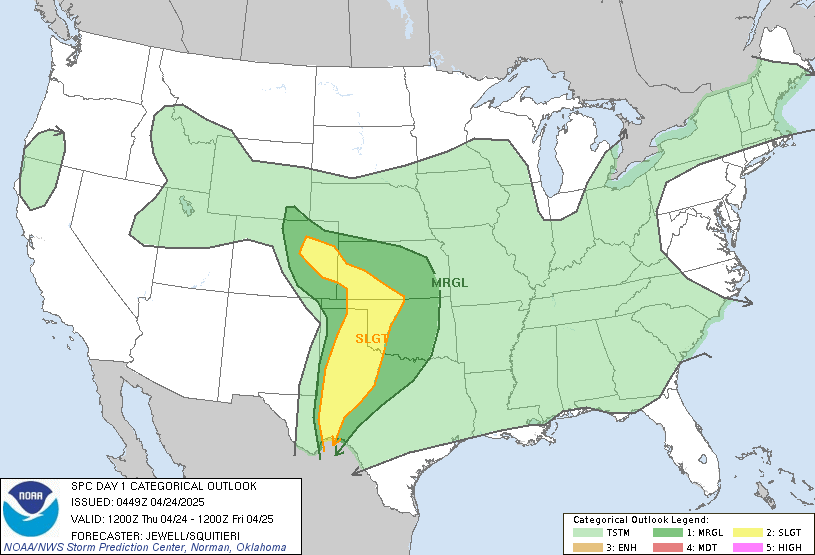RSS Mesoscale Discussions from Storm Prediction Center
SPC 0100Z Day 1 Outlook

Day 1 Convective Outlook
NWS Storm Prediction Center Norman OK
0626 PM CST Thu Dec 25 2025
Valid 260100Z - 261200Z
...THERE IS A MARGINAL RISK OF SEVERE THUNDERSTORMS ALONG MUCH OF
THE CALIFORNIA COAST AND INTO THE CENTRAL AND NORTHERN VALLEYS...
...SUMMARY...
The risk for isolated severe thunderstorms will persist this evening
and into tonight across much of the California Coast and portions of
the Central and Northern Valleys.
...Coastal CA into the Central and Northern Valleys...
Scattered showers and thunderstorms persist this evening from the
Sacramento Valley toward the central coastline, with another area
over southern CA. Areas of heating have led to a few stronger cells
around the Sacramento area, with indications of marginal hail. To
the west, another frontal band of convection will continue to
approach much of the central coastal counties. The 00Z OAK sounding
shows steep lapse rates and strong shear profiles, which may favor
both damaging gusts or embedded areas of rotation as leading cells
and/or the frontal band approach later this evening. As such, will
maintain the Marginal Risk.
For more information, see mesoscale discussion 2272.
..Jewell.. 12/26/2025
Read more






